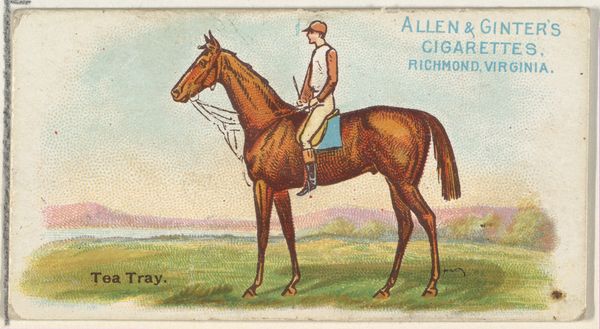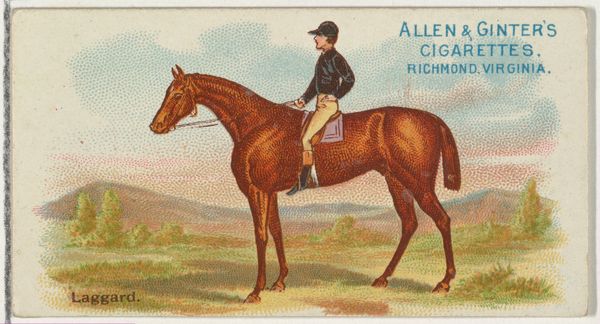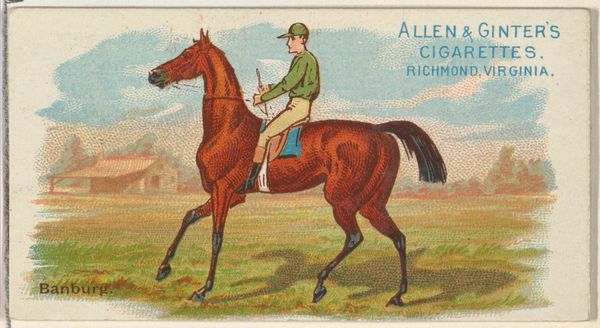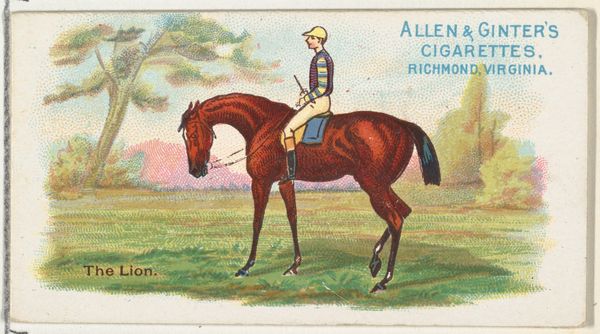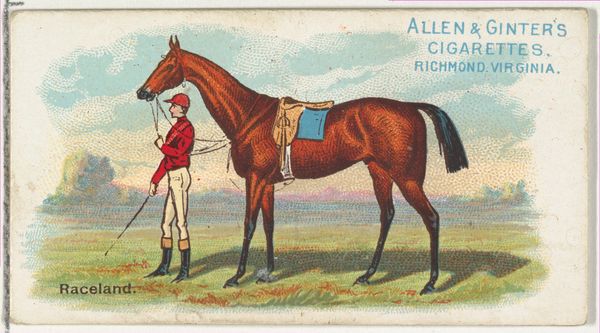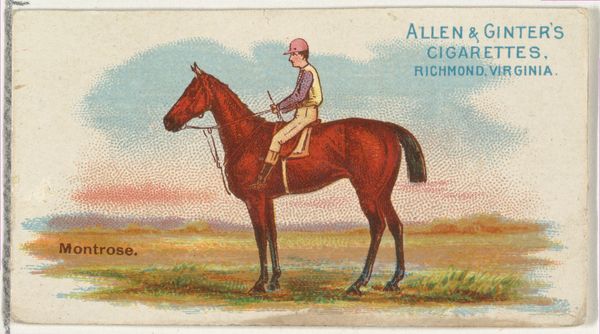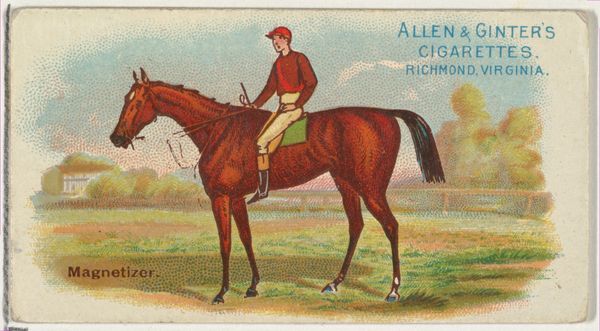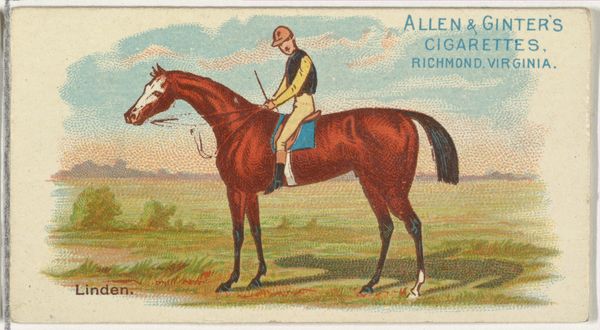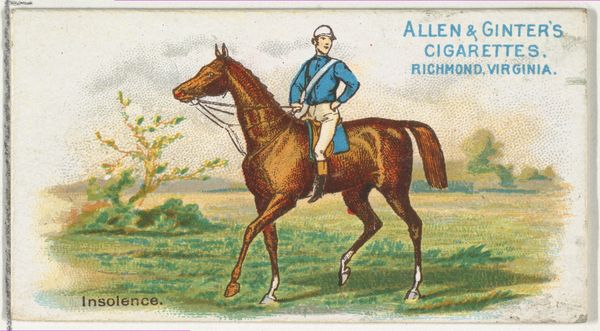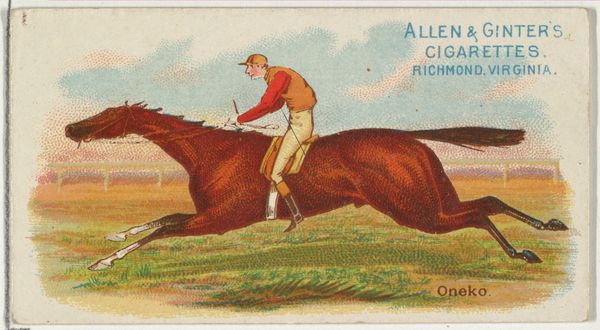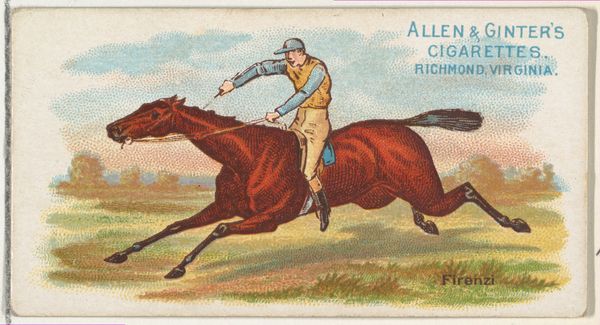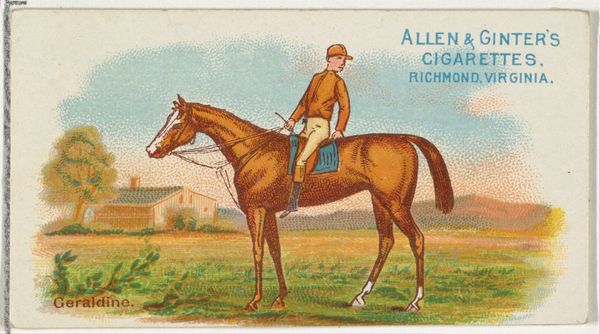
Esquimau, from The World's Racers series (N32) for Allen & Ginter Cigarettes 1888
0:00
0:00
drawing, coloured-pencil, print, watercolor
#
portrait
#
drawing
#
coloured-pencil
#
pictorialism
# print
#
landscape
#
curved letter used
#
watercolor
#
coloured pencil
#
horse
#
men
#
watercolour illustration
#
genre-painting
Dimensions: Sheet: 1 1/2 x 2 3/4 in. (3.8 x 7 cm)
Copyright: Public Domain
Editor: This is "Esquimau," a print from 1888 made for Allen & Ginter Cigarettes. It's quite small, like a playing card, depicting a jockey on a reddish-brown horse. It's so interesting, these ephemeral pieces of advertising ending up in museum collections. What story do you think it tells us? Curator: Well, these cards weren’t exactly "art" as we understand it today. Think of them more as collectable commodities. Produced for Allen & Ginter cigarettes, they tell us a lot about late 19th-century marketing and social values. They played into a broader culture of collecting and display that really took off in this period. Editor: Collectables used as marketing, sure, but there’s still an image being sold alongside the cigarettes. This particular card is from "The World's Racers" series... were they just trying to associate the brand with a kind of aspirational cosmopolitanism? Curator: Precisely. "The World's Racers" implies a knowledge of different cultures, but often, this was a very superficial, even stereotypical, understanding. Also, consider the imperial context. Whose races and racers were celebrated and whose were ignored or exoticized? It's all part of the public role that art (and ephemera) play in shaping societal views. Editor: That’s a good point; framing it within an imperial gaze adds so much to the analysis. And thinking about its original display… how these were traded and collected… fascinating! Thanks for that historical context. Curator: My pleasure! Seeing art within its broader societal structure helps us to think critically about the public function and politics behind such a small artwork.
Comments
No comments
Be the first to comment and join the conversation on the ultimate creative platform.
